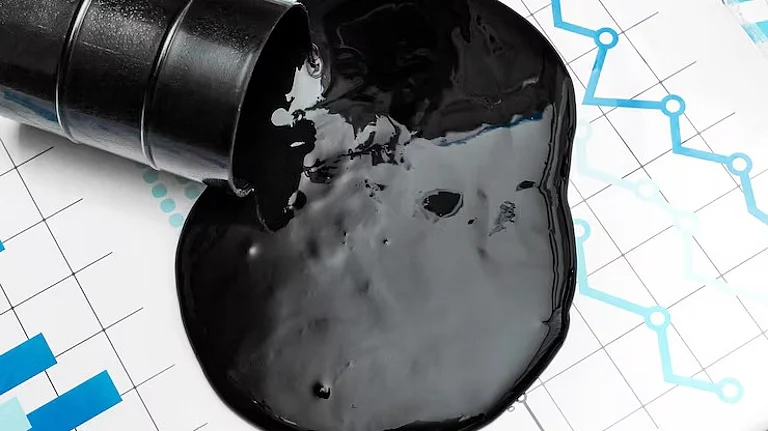Oil prices hit their lowest levels in more than four years, with the benchmark Brent falling below the $60-per barrel mark as concerns of a supply glut spooked investors. The concerns came to the forefront after the Organization of the Petroleum Exporting Countries and their allies decided to accelerate production increases over the weekend. The decision spread fears that increased supply at a time when demand remains sluggish amid the ongoing uncertainties in the face of Trump’s tariff wars would result in an oversupply, hurting oil prices.
Brent crude futures plunged to a low of $58.50 per barrel while the US West Texas Intermediate (WTI) crude slipped further lower towards $56 per barrel. Both benchmarks recorded their lowest finishes since February 2021. However, some recovery was seen in today’s trade as the two benchmarks rebounded close to12%.
Oil prices are also coming off of a rough week in which the Brent lost over 8% while the WTI shed 7.5%. The fall in prices last week came majorly after Saudi Arabia cautioned that it was ready to grapple with prolonged downturn in prices.
Over the weekend, OPEC+ agreed to quicken the pace of output increases for a second straight month, approving a June hike of 411,000 barrels per day (bpd). This brings the total additions across April, May and June to 960,000 bpd—effectively unwinding 44% of the 2.2 million bpd in voluntary cuts put in place since 2022, according to estimates from Reuters.
Reports suggest that the spike in production was aimed to tackle members like Iraq and Kazakhstan for exceeding production quotas, while also putting pressure on US shale producers.
More Downside on the Way?
With the uncertainty around the fate of trade policies likely to be around for some time, oil prices are expected to hover in a volatile zone. Analysts at Axis Securities expect the commodity to trade in the range of $56.32-$58.54 in the near term.
Aside from that too, prominent investment banks also expect oil prices to remain along the same lines for the remainder of the year. Revising its outlook, Barclays has cut its Brent forecast by $4 to $66 a barrel for 2025, and by $2 to $60 for 2026.
ING also followed a similar path and now expects Brent to average $65 this year, down from its previous forecast of $70.
Strategists had flagged potential downside risks to oil prices as early as last year, following Donald Trump’s victory in the US presidential election. Concerns quickly mounted that his hardline stance on tariffs and protectionist policies could weigh heavily on global oil demand.
Analysts at Citigroup warned that crude prices could average around $60 per barrel through 2025, citing trade tensions and rising oil supply. Morgan Stanley also revised its outlook, lowering its Brent forecast and now expecting the benchmark to remain in the $60 range during the second half of 2025.

































